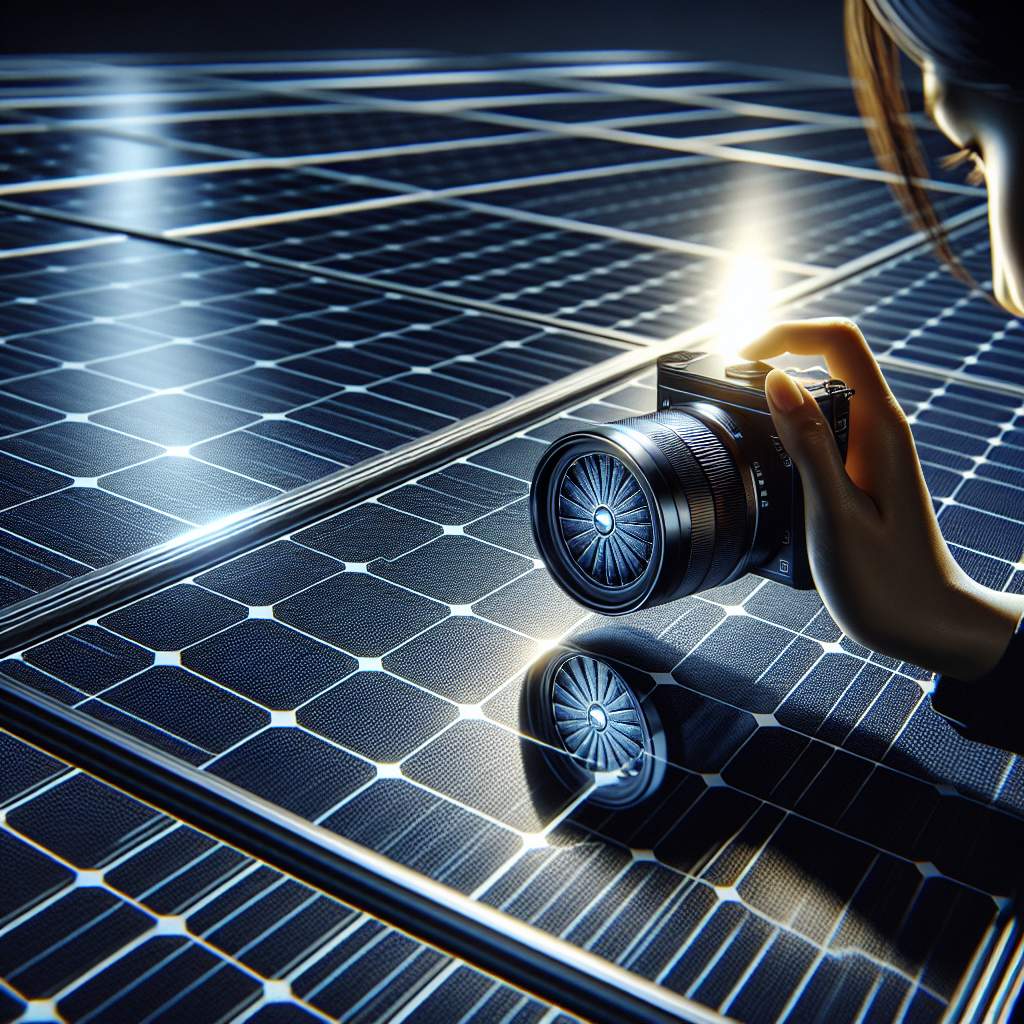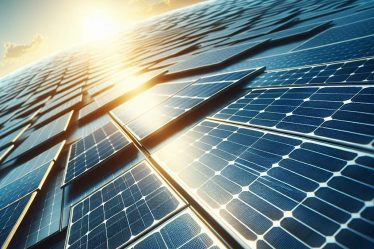
So, you’re curious about diving into the world of solar panel technology, huh? Well, buckle up because we’re about to take a deep dive into this illuminating subject. From understanding how these sleek panels work to uncovering the latest breakthroughs and future prospects, we’ve got you covered. Whether you’re a tech enthusiast or simply looking to harness some eco-friendly power, this article will shed light on everything solar panel technology. So grab your shades and let’s embark on this enlightening journey together!
Introduction to solar panel technology
Solar panel technology is all about capturing the sun’s energy and turning it into electricity. Photovoltaic cells in the panels do this by converting sunlight into direct current (DC) electricity. This clean and renewable energy source helps reduce our reliance on non-renewable resources like coal and oil.
The efficiency of solar panels has improved over the years, making them more accessible for residential and commercial use. Innovations in materials and manufacturing processes have led to higher energy conversion rates, allowing more power to be generated from the same amount of sunlight. This means more savings on electricity bills and a smaller environmental footprint.
Understanding how solar panels work can empower individuals and businesses to make informed decisions about incorporating this sustainable energy solution into their lives.
How do solar panels work
So, you’re wondering how solar panels work, huh? Well, let me break it down for you. When sunlight hits the solar panels on your roof or in a field of solar panels, the photovoltaic cells inside them get to work. These cells are made of silicon, which is a semiconductor that can convert sunlight into electricity. As the sunlight knocks into the silicon atoms, it makes electrons move around and creates an electric current. This current then flows through the panel and into an inverter, where it gets turned from direct current (DC) electricity to alternating current (AC) electricity.
That AC electricity is what we use to power our homes, businesses, and even whole communities! Isn’t that amazing? And get this – when there’s more sunlight hitting those solar panels, they produce more electricity. So on a sunny day, they’re really cranking out the power! But don’t worry if it’s cloudy – solar panels can still generate some electricity even when it’s not super sunny outside.
Now here’s the cool part: using solar energy from those panels helps reduce our reliance on non-renewable sources like coal and gas. Plus, it’s better for our planet because it doesn’t release harmful greenhouse gases into the air like those other energy sources do. So there you have it – that’s how solar panels do their thing!
Types of solar panels
When it comes to harnessing the power of the sun, there are a few different types of solar panels that you can choose from. Each type has its own unique characteristics and benefits:
• Monocrystalline solar panels: Made from single-crystal silicon, these panels are known for their high efficiency and sleek appearance.
• Polycrystalline solar panels: Constructed from multiple silicon fragments, these panels offer a cost-effective option with good durability and performance.
• Thin-film solar panels: Using layers of various materials like amorphous silicon or cadmium telluride, these flexible and lightweight panels are perfect for certain applications where traditional panels may not be suitable.
Understanding the differences between these types of solar panels
Factors affecting the efficiency of solar panels
Solar panels’ efficiency is influenced by various factors. The angle and direction of the sunlight impact how much energy a solar panel can produce. Shading from trees or buildings can also decrease their effectiveness.
The type of material used in the solar panels, such as monocrystalline or polycrystalline silicon, affects their efficiency. Additionally, the temperature can alter how well solar panels work, with high temperatures reducing their effectiveness.
Dirt and dust accumulation on the surface of solar panels can hinder their performance. Regular cleaning and maintenance are important to ensure they function at optimal capacity.
The electrical wiring and components within a solar panel system play a crucial role in determining its overall efficiency. Using high-quality materials and ensuring proper installation can significantly impact its performance.
Technological advancements continue to improve the efficiency of solar panels. Innovations such as bifacial solar panels and smart tracking systems have shown promise in maximizing energy production.
- Sunlight angle and direction
- Type of panel material
- Temperature
- Maintenance
- Electrical components
- Technological advancements
Latest technological advancements in solar panels
Hey folks, have you heard about the latest buzz in the solar panel world? Well, let me tell you about some cool advancements that are shaking things up. First off, solar panels are reaching new heights of efficiency with the development of next-gen perovskite cells, which promise to outperform traditional silicon-based ones. These bad boys are cheaper and easier to produce, making renewable energy more accessible. Plus, researchers are also tinkering with bifacial panels, which can capture sunlight from both sides, boosting overall power generation. Talk about maximizing every ray of sunshine!
But wait, there’s more! Ever heard of thin-film solar technology? It’s gaining traction due to its flexibility and lightweight design. Think sleeker and more versatile solar panels that can be integrated into various surfaces like roofs and even clothing! And get this – scientists are dabbling in tandem solar cells, stacking different materials to absorb a broader spectrum of light for increased output. It’s like a tag-team match against inefficiency! With these game-changing innovations on the horizon, it’s an exciting time for renewable energy enthusiasts and nature lovers alike. Soak up those rays while we ride this wave of solar panel progress!
Maximizing solar panel efficiency

Looking to get the most outta your solar panels? Well, you’re in luck! There are a bunch of nifty ways to boost their efficiency and squeeze every last drop of power from those rays. For starters, keep ’em squeaky clean – dirt and grime can really put a damper on things. Angle ’em just right, too – gotta soak up as much sunlight as possible! Oh, and don’t forget about the ol’ trees casting shade – trim ’em back if they’re getting in the way. Upgrading to high-efficiency solar panels can also make a world of difference – newer tech is always worth checkin’ out.
Now, let’s talk about some other tricks up our sleeve. How ’bout throwin’ some mirrors into the mix? Yeah, seriously! They can help bounce extra light onto your solar panels for an added efficiency boost. And hey, why not top it off with some snazzy tracking systems that follow the sun throughout the day? It’s like givin’ your solar panels a front-row seat to all those sunny antics! Remember though, each home or business is unique – so what works best might vary from place to place. But armed with these tips and a bit o’ know-how, you’ll be well on your way to maxing out that solar panel efficiency
Environmental impact and benefits of solar energy
Solar energy is a clean and renewable source of power. It helps in reducing greenhouse gas emissions and fighting climate change. Solar panels convert sunlight into electricity without producing any harmful pollutants, making them environmentally friendly.
When solar panels generate electricity from the sun, they reduce the demand for electricity from traditional sources like coal and natural gas. This means lower carbon emissions, which contribute to cleaner air and water.
The installation of solar panels can also lead to economic benefits by creating jobs in the renewable energy sector. Additionally, it decreases our reliance on non-renewable resources, helping to secure a sustainable future for generations to come.
Solar energy is a vital part of the solution to environmental challenges we face today.
Integrating solar panels into homes and businesses
When considering solar panels for your home or business, it’s important to understand the benefits they bring. Solar panels harness energy from the sun and convert it into electricity, reducing your reliance on traditional power sources. Integrating solar panels into your property can lead to significant cost savings over time while also reducing your carbon footprint. With advancements in technology, modern solar panels are more efficient and durable than ever before.
Installing solar panels involves mounting them onto the roof of a building or placing them on the ground nearby. They work by capturing sunlight through photovoltaic cells, which then generate direct current (DC) electricity. This is converted into alternating current (AC) by an inverter so that it can power electrical devices. In addition to providing renewable energy, solar panels can increase the value of a property and contribute to a greener environment.
Businesses can benefit from integrating solar panels by cutting operational costs and demonstrating their commitment to sustainability. Beyond cost savings, utilizing solar energy can enhance brand reputation and attract environmentally conscious customers.
Future prospects for solar panel technology
The future of solar panel technology looks bright, with constant innovations boosting efficiency and affordability. As researchers delve into new materials and designs, the potential for higher energy yields continues to expand. Companies like SunPower are leading the way in developing more efficient panels, while advancements in energy storage solutions are enhancing the overall effectiveness of solar power systems. With an increasing focus on sustainability and renewable energy, the demand for solar panels is set to soar, driving further improvements in technology and bringing us closer to a clean energy future.
As solar panel technology evolves, we can anticipate greater integration into everyday life, from portable devices to large-scale power plants. Moreover, emerging concepts such as transparent solar panels offer exciting possibilities for incorporating solar power into building materials without compromising aesthetics. The ongoing progress in this field signifies a promising shift towards widespread adoption of solar energy as a primary source of electricity generation.
Conclusion
In conclusion, solar panel technology presents a promising solution for sustainable energy. Solar panels harness the power of the sun to generate electricity, offering an eco-friendly alternative to traditional energy sources. As advancements continue to enhance solar panel efficiency, the potential for widespread adoption becomes increasingly feasible. With proper installation and maintenance, solar panels can significantly reduce carbon footprint and contribute to a greener future.
The evolution of solar panel technology has led to more affordable options for residential and commercial use. The availability of tax incentives and rebates further encourages investment in solar energy systems. As the global focus on renewable energy intensifies, understanding the benefits of solar panels is essential for individuals and businesses alike.
Embracing solar panel technology not only contributes to environmental conservation but also offers long-term economic advantages.
Questions and Answers
How do solar panels work?
Solar panels work by converting sunlight into electricity through the photovoltaic effect, where photons from the sunlight knock electrons free from atoms, generating a flow of electricity.
What factors affect solar panel efficiency?
Solar panel efficiency is affected by factors such as the type of solar cells used, temperature, shading, tilt angle, and the quality of installation and maintenance.
What are the latest technological advancements in solar panel technology?
The latest advancements include bifacial solar panels, PERC (Passivated Emitter Rear Cell) technology, and smart solar tracking systems that maximize energy production.
How can I maximize the efficiency of my solar panels?
You can maximize efficiency by ensuring proper installation, regular cleaning and maintenance, using high-efficiency solar panels, optimizing tilt angle and orientation, and minimizing shading.



